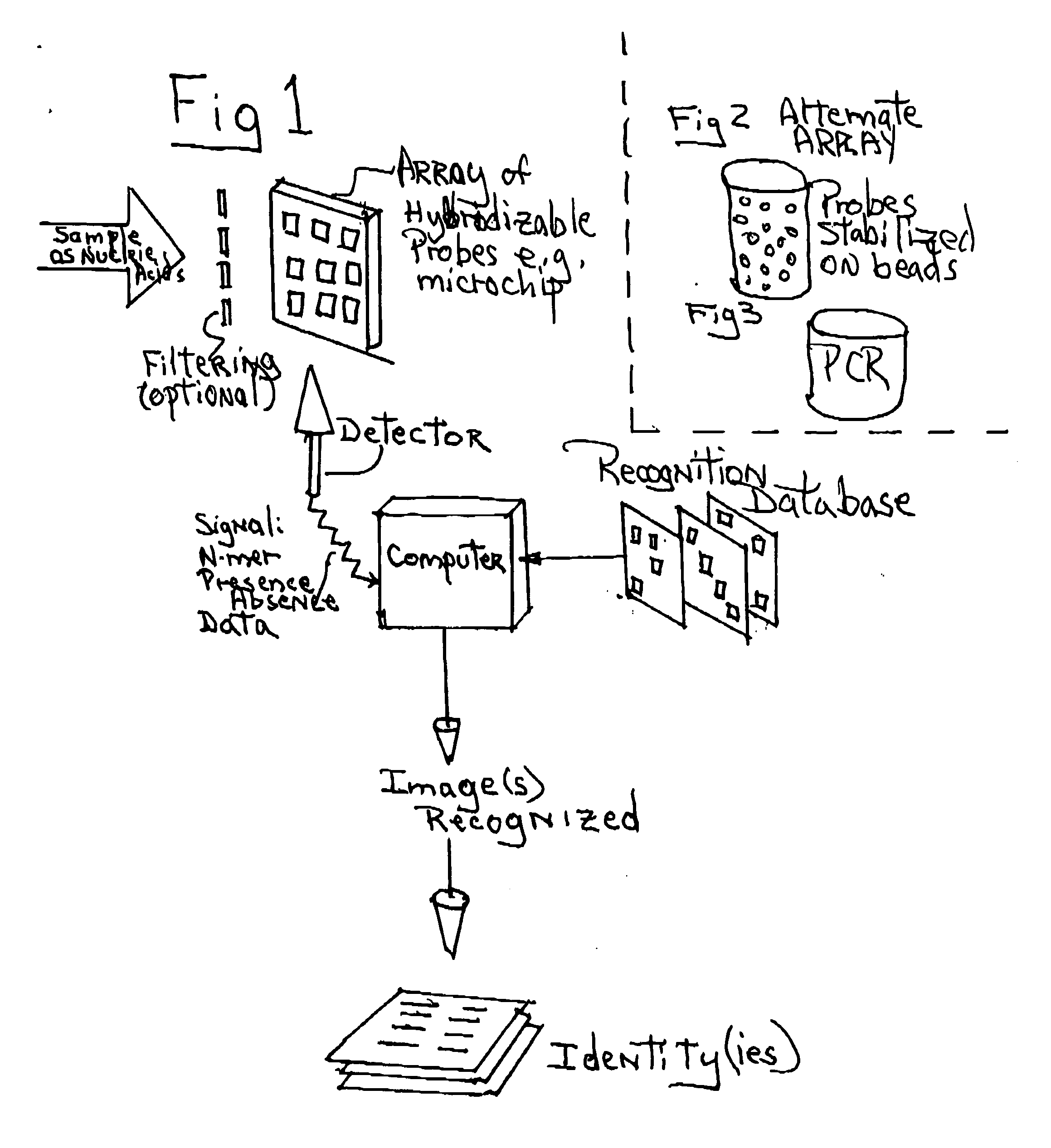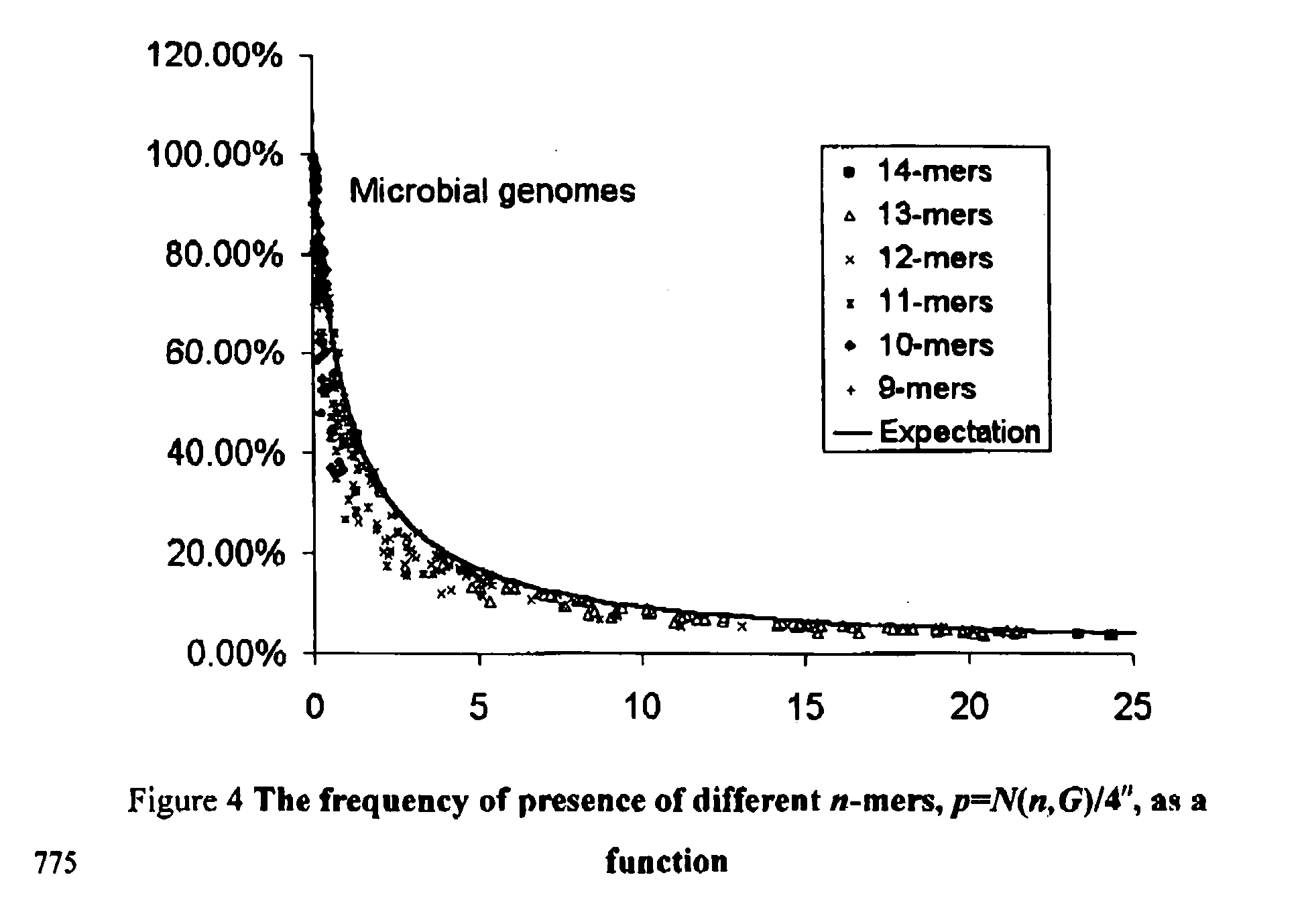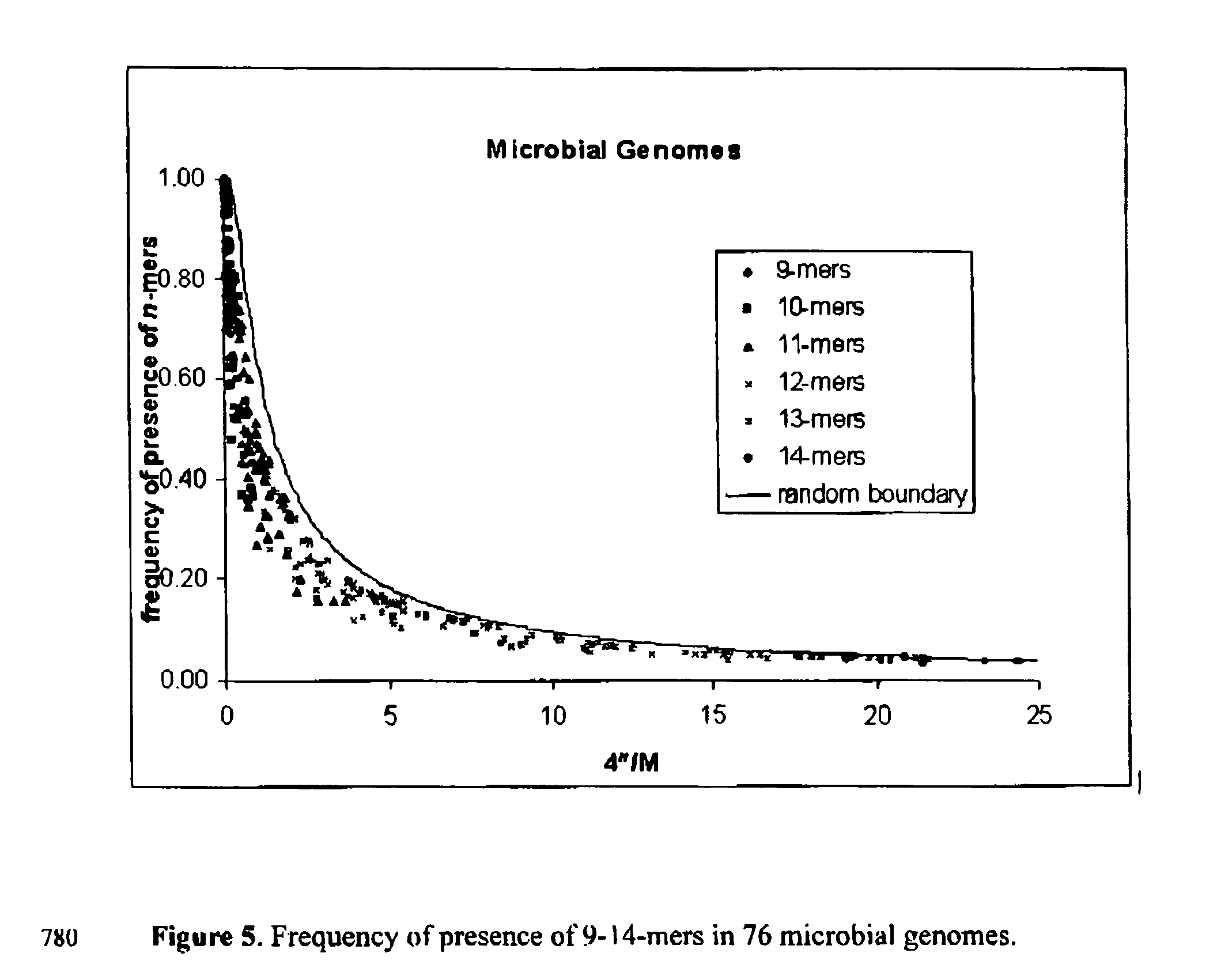Process and apparatus for using the sets of pseudo random subsequences present in genomes for identification of species
a technology of pseudo random subsequences and genomes, applied in the field of bioinformatics, can solve the problems of rapid increase of computational complexity associated with studies for n>11, and achieve the effect of rapid increase of computational complexity and reasonable amount of computing tim
- Summary
- Abstract
- Description
- Claims
- Application Information
AI Technical Summary
Benefits of technology
Problems solved by technology
Method used
Image
Examples
example 1
[0057] For our analysis we have picked genomes available in the NCBI [http: / / www.ncbi.nlm.nih.gov / entrez / query.fcgi?db=Genome] including microbial (76), viral (176), and multicellular organisms (5) genomes, with sizes ranging from 0.32 Kb (Cereal yellow dwarf virus-RPV satellite RNA NC—003533) to 2.87 Gb (human). A complete list of all genomes and the complete results of the analysis discussed below are available as supplementary material at http: / / www.cs.uh.edu / ˜bp / .
[0058] For our computations with multi-cellular organisms, microbial and viruses we used both complementary sequences for computational convenience because it is the way we can observe it based on the present technology (PCR, cDNA Microarrays, etc.). This trivially increases the amount of analyzed material by a factor of two. To take this fact into account for normalization, we will use the term “total sequence length”—TSL, equal to twice the genome. We will denote the total sequence length so defined by M.
[0059] As t...
example 2
[0062] Here we analytically estimate the frequency of presence of n-mers in a genome of length M. Let us apply the logic of the example shown in Tables 1 and 3 to autocorrelations, i.e. let us check whether the appearances of distinct n-mers are independent or correlated within a single genome. Assume that the multiple appearances of a given n-mer at different locations within the same genome are also independent events. Then, the probability of 12-mer to appear once is p, —twice=p2, three times=p3 and so on. The total number of 12-mers in the genome, taking into account multiple appearances is
M≈4n(p+p2p3+ . . . )=4np / (1−p ), 6)
from which one obtains,
p≈M / (M+4n). 7)
[0063] This formula has been presented in the text, and is shown in FIG. 1 by a solid line. One may also compare it to the experimental values from the last column of Table 1. In accordance with Eq. (1) we have for Salmonella typhi p=34.44%, for Mycobacteriiim tuberculosis H37Rv, p=34.46% and for Bacillius subtili...
example 3
[0064] Here we will estimate the probability to make an error discriminating organisms by their analysis (“fingerprints”) in a random microarray, which consists of L n-mers. Assume that we need to discriminate between the two genomes G1 and G2 of sizes M1 and M2, respectively. Let G1 (G2) contains N1 (N2) different n-mers and N12=N(n,G1,G2) n-mers are present simultaneously in both genomes (this is the size of intersection of two sets of n-mers corresponding to “n-mer contents” of G1 and G2; we denote this set as G1∩G2). The union G1∪G2 contains N1+N2−N12 n-mers. Let us consider a fingerprint of the union of the two genomes, G1∪G2. For every n-mer appearing in this fingerprint, the probability that it occurs in the intersection region, G1∩G2, is N12N1+N2-N12.9)
[0065] An error, E, occurs when two genomes share the same fingerprint, i.e. all of n-mers that form the fingerprint represent the intersection region. This will happen with probability P(E❘k)=(N12N1+N2 -N12)k.10)
[0066] In...
PUM
| Property | Measurement | Unit |
|---|---|---|
| Length | aaaaa | aaaaa |
| Size | aaaaa | aaaaa |
| Melting point | aaaaa | aaaaa |
Abstract
Description
Claims
Application Information
 Login to View More
Login to View More - R&D
- Intellectual Property
- Life Sciences
- Materials
- Tech Scout
- Unparalleled Data Quality
- Higher Quality Content
- 60% Fewer Hallucinations
Browse by: Latest US Patents, China's latest patents, Technical Efficacy Thesaurus, Application Domain, Technology Topic, Popular Technical Reports.
© 2025 PatSnap. All rights reserved.Legal|Privacy policy|Modern Slavery Act Transparency Statement|Sitemap|About US| Contact US: help@patsnap.com



